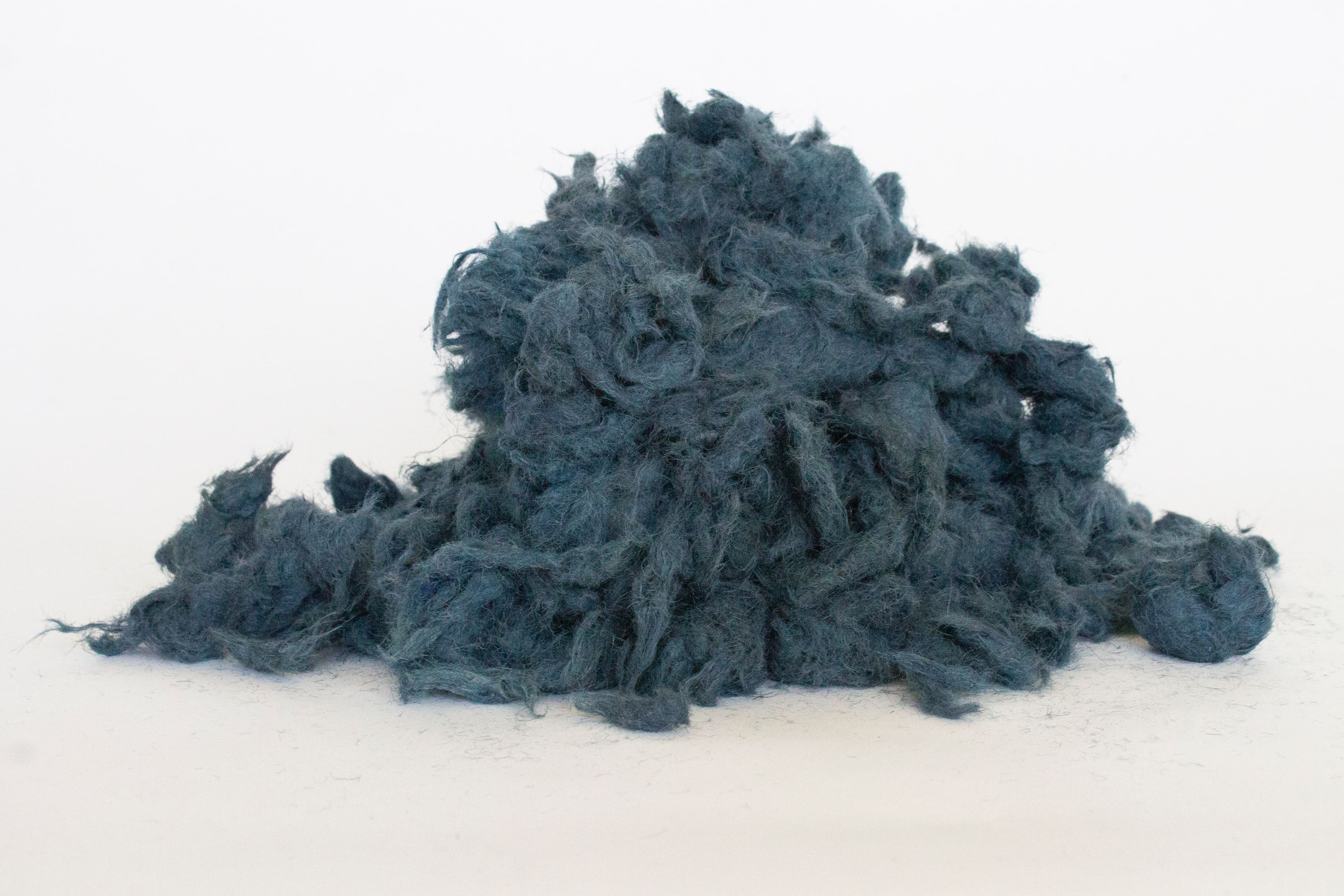1. For Eggshell Ceramic, how did you optimise the particle size and binder composition to achieve structural integrity while preserving its compostable qualities?
The story of EggshellCeramic© began in 2019, during a competition for material designers. I spent months experimenting with biodegradable binders such as starch, cellulose, alginate, and chitosan, each with radically different results. One early batch had the look of ceramics but the feel of cardboard, fragile and feather-light. But here’s what caught my attention: it dissolved in water. Not ideal for a vase, but thrilling for the idea of compostability.
Five years and nearly 1000 experiments later, the material has grown into something far sturdier. The secret lies in the fineness of the eggshell particles. The smaller the grind, the stronger the result, and also the faster it returns to the soil. A whole shell won’t break down quickly, but a powder almost melts into the earth. With the help of industrial grinders, I reached that sweet spot: strength without sacrificing compostability. The formula remains a closely guarded studio secret. Still, I’m always open to collaborating with companies who share the vision.
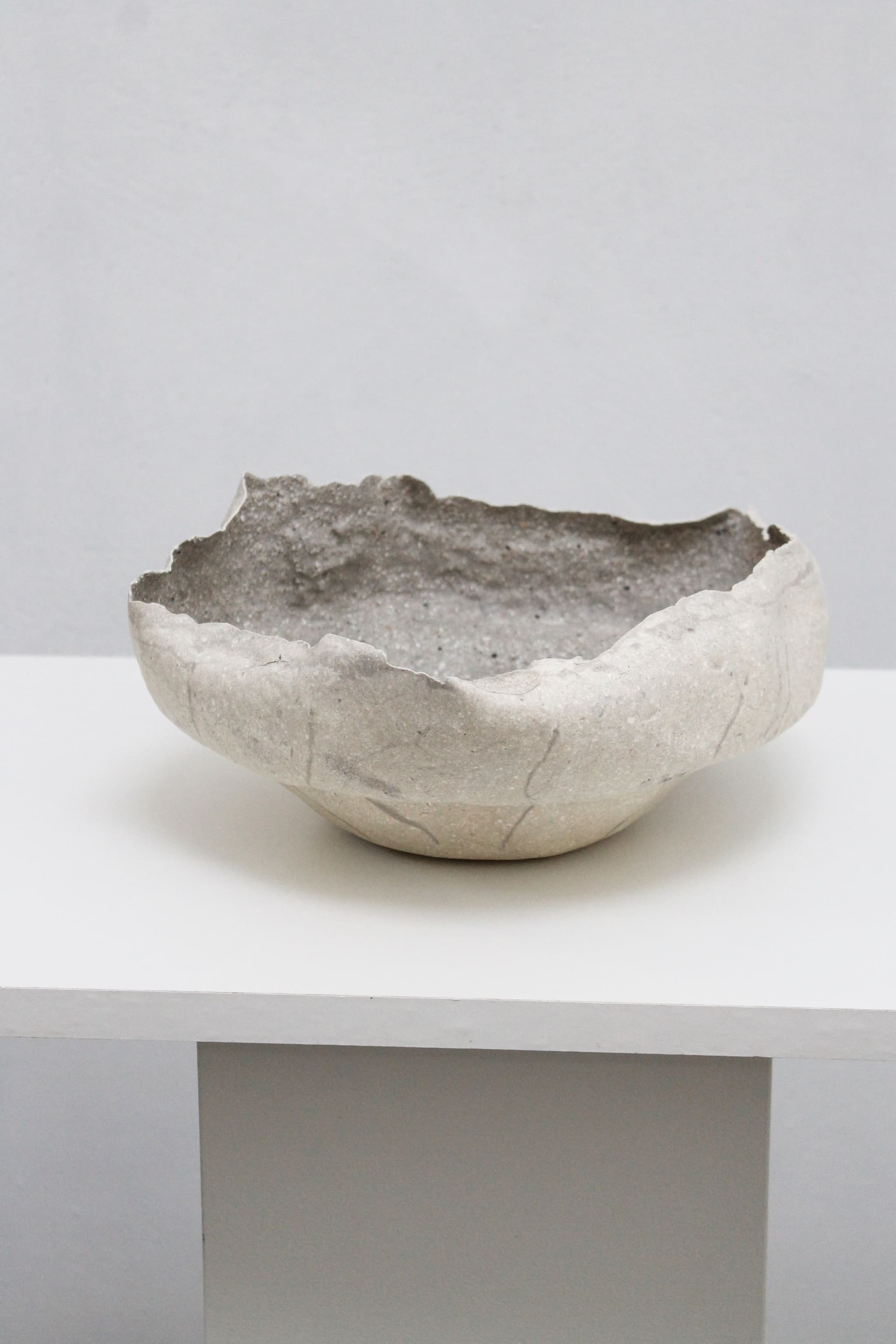
2. In evolving Eggshell Ceramic with improved water resistance and strength, which material additives or post-processing techniques were most crucial to that enhancement?
If there’s one riddle I’ve wrestled with, it’s water resistance. In 2024, I worked with a scientist to explore lignin-based innovations, the material darling of bio-research. It did wonders in the lab, but the trade-off was steep: energy-heavy production and a rigid, industrial method that erased the handcrafted character I treasure.
So instead of chasing the newest innovation, I flipped the script and looked backwards. How did makers centuries ago achieve durability with natural materials? That detour led me to traditional, low-tech methods that felt almost forgotten but worked beautifully for EggshellCeramic©. The outcome was both practical and poetic: a material strengthened by nature’s own chemistry, not synthetic shortcuts.

3. How does the low density of Eggshell Ceramic, which resembles cardboard more than traditional ceramics, influence its suitability for functional objects like tableware or plant pots?
Early blog posts from 2019 painted EggshellCeramic© as “cardboard-like”. But let’s set the record straight: that version is long gone. Today, anything thicker than 3mm feels clay-like, tactile, and strong. The Eggshell Re-Planters or my flower and fungi-inspired sculptures are anything but flimsy. They’re surprisingly tough and resilient.
That said, I still indulge in designing ultra-thin bowls with fragile edges. Fragility can be an aesthetic choice. Not every material has to mimic industrial ceramics. Some objects thrive precisely because they embrace a different kind of delicacy.
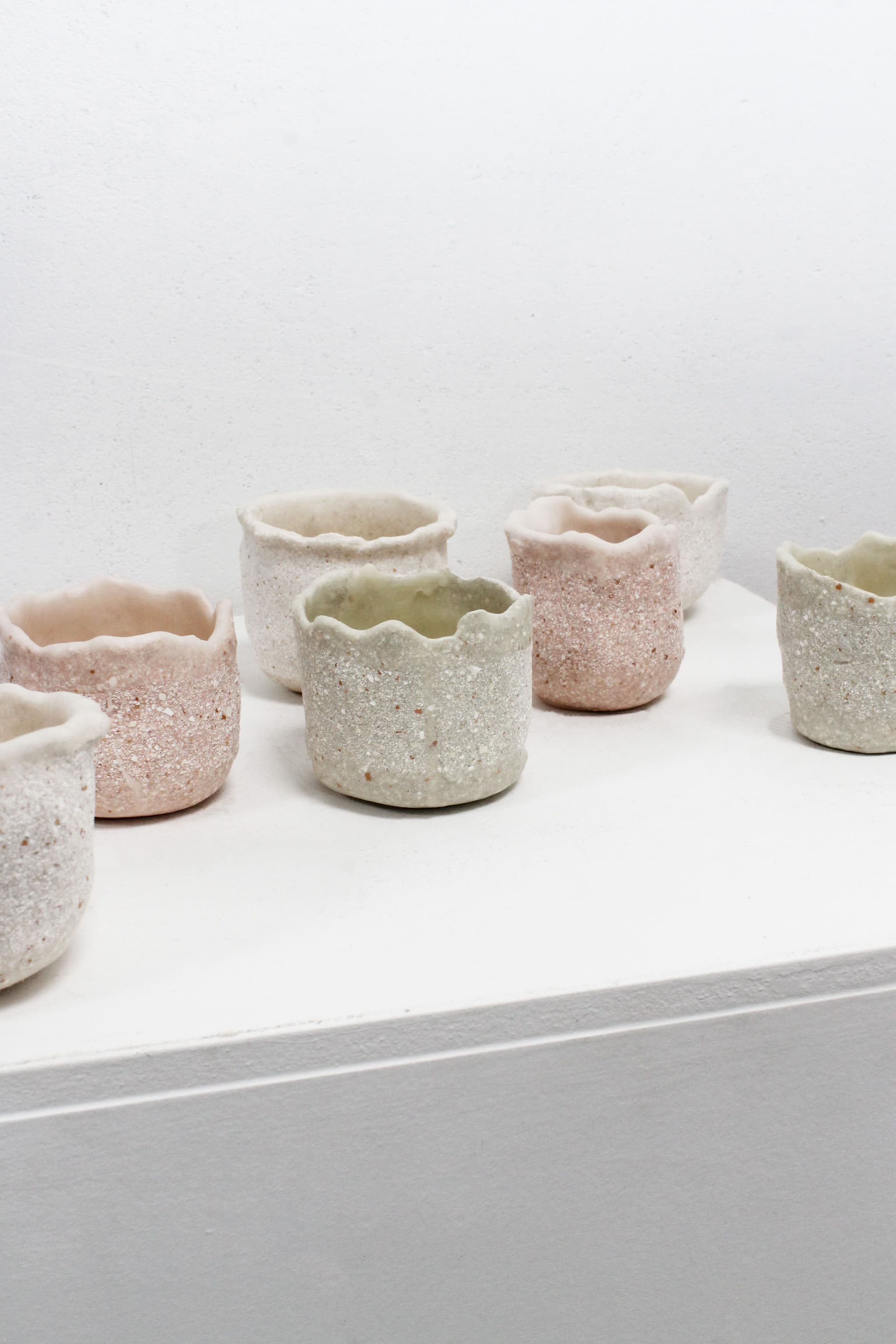
4. Considering Eggshell Ceramic’s air-dry production, how do you evaluate its environmental impact versus traditional fired ceramics in terms of energy use and emissions?
Here’s the crucial difference: EggshellCeramic© is 90% food waste. Traditional ceramics rely on firing, which not only consumes massive amounts of energy but also releases CO₂ when calcium carbonate calcines. With my process, air-drying keeps the carbon locked inside the material. No kilns, no fuel bills, no emissions.
The most energy spent? My own hands. Grinding and pasteurizing require some input, but nothing compared to a firing kiln. And with an existing eggshell industry already processing shells on an industrial scale, the potential for efficient large-scale production is within reach.

5. What are the key challenges in scaling Eggshell Ceramic for broader application, particularly around the consistent sourcing and preparation of eggshell waste?
The challenge isn’t availability. Eggshell waste is abundant, for better or worse, given our animal product consumption. The challenge is philosophical: how to use this waste without stripping it of its natural role as a nutrient. Eggshells enrich soil, feed animals, and support ecosystems.
That’s why I refuse to blend them with synthetic or non-biodegradable binders. Scaling EggshellCeramic© is about protecting the cycle: creating objects that, once discarded, return to the earth without residue. Some of those will be functional, others purely decorative. Both are valid, as long as they don’t become waste again.
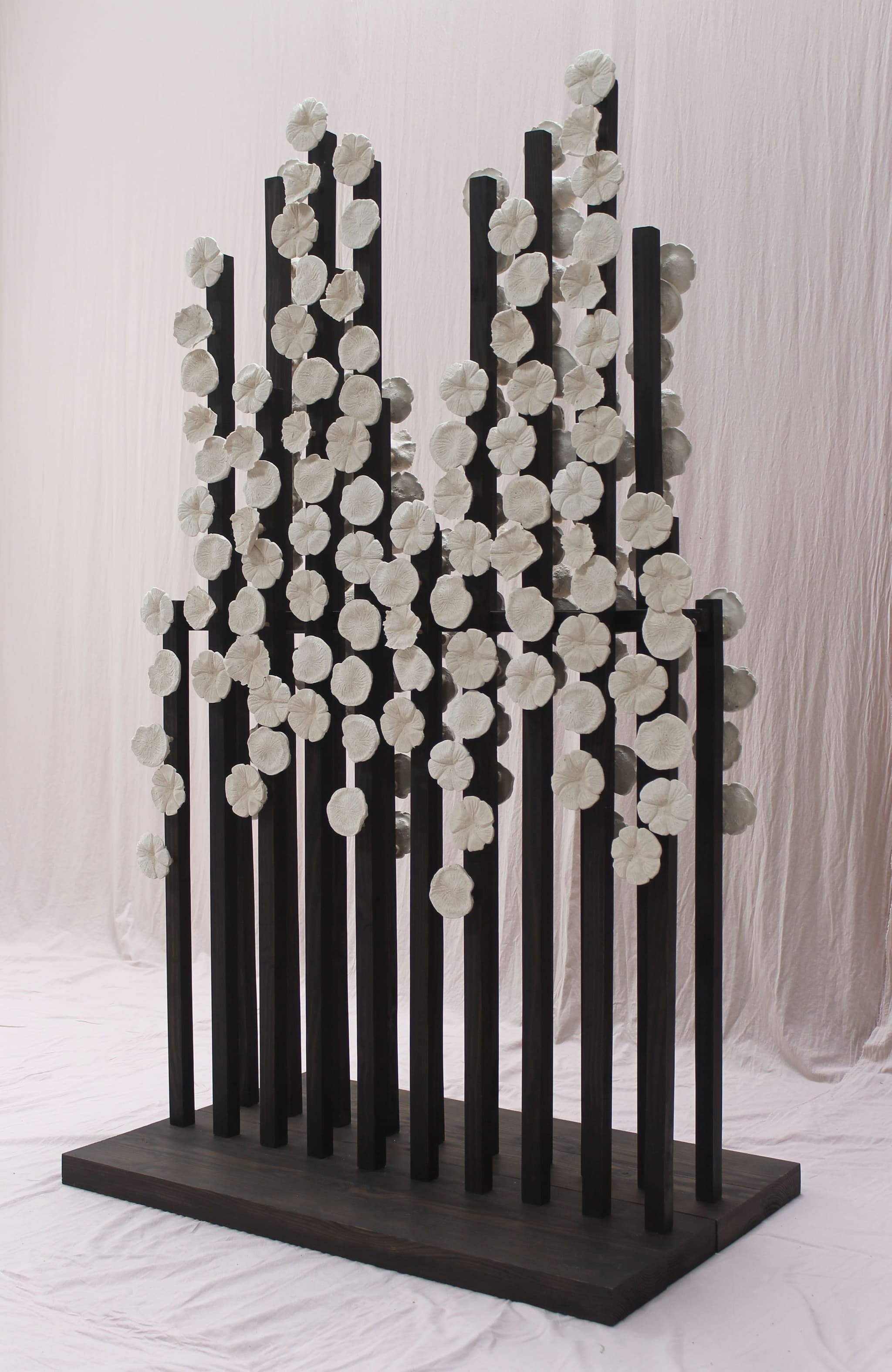
6. As Eggshell Ceramic is designed to biodegrade and return nutrients to the soil, have you conducted tests on its compost behaviour and potential soil enrichment?
Absolutely. In agriculture, eggshells are valued for balancing soil pH and replenishing calcium, which is increasingly scarce due to nitrogen-driven acidification. Acidic soils erode biodiversity, starving both plants and animals of essential minerals.
For my Eggshell Re-Planter, I tracked its composting behaviour closely. In humid soil, the planter breaks down within 8–12 weeks. The superfine particles linger longer, around nine months, providing a slow-release calcium boost. Every ingredient is home-compostable, so nothing lingers unnaturally.
Formal lab certification is still on my wishlist. Funding would make that possible. For now, my field tests give me confidence that EggshellCeramic© truly enriches, not pollutes, the soil.

7. In Jute Light, what performance criteria guided your choice to embed jute fibre offcuts into gypsum, and how do the fibres reinforce the plaster structurally?
The Jute Light grew out of my earlier Jute Tile experiments. The fibres came from Forbo Flooring B.V., a Dutch linoleum company whose only waste stream is jute offcuts. I first noticed this during a factory visit in 2016, and I couldn’t get the material out of my mind.
In plaster, those fibres don’t just vanish. They stay visible, textured, alive. Structurally, they act much like fibres in concrete: reinforcing the plaster, reducing the amount needed, and creating tiles that are both lighter and tougher. The result is a material that celebrates its waste origins rather than concealing them.
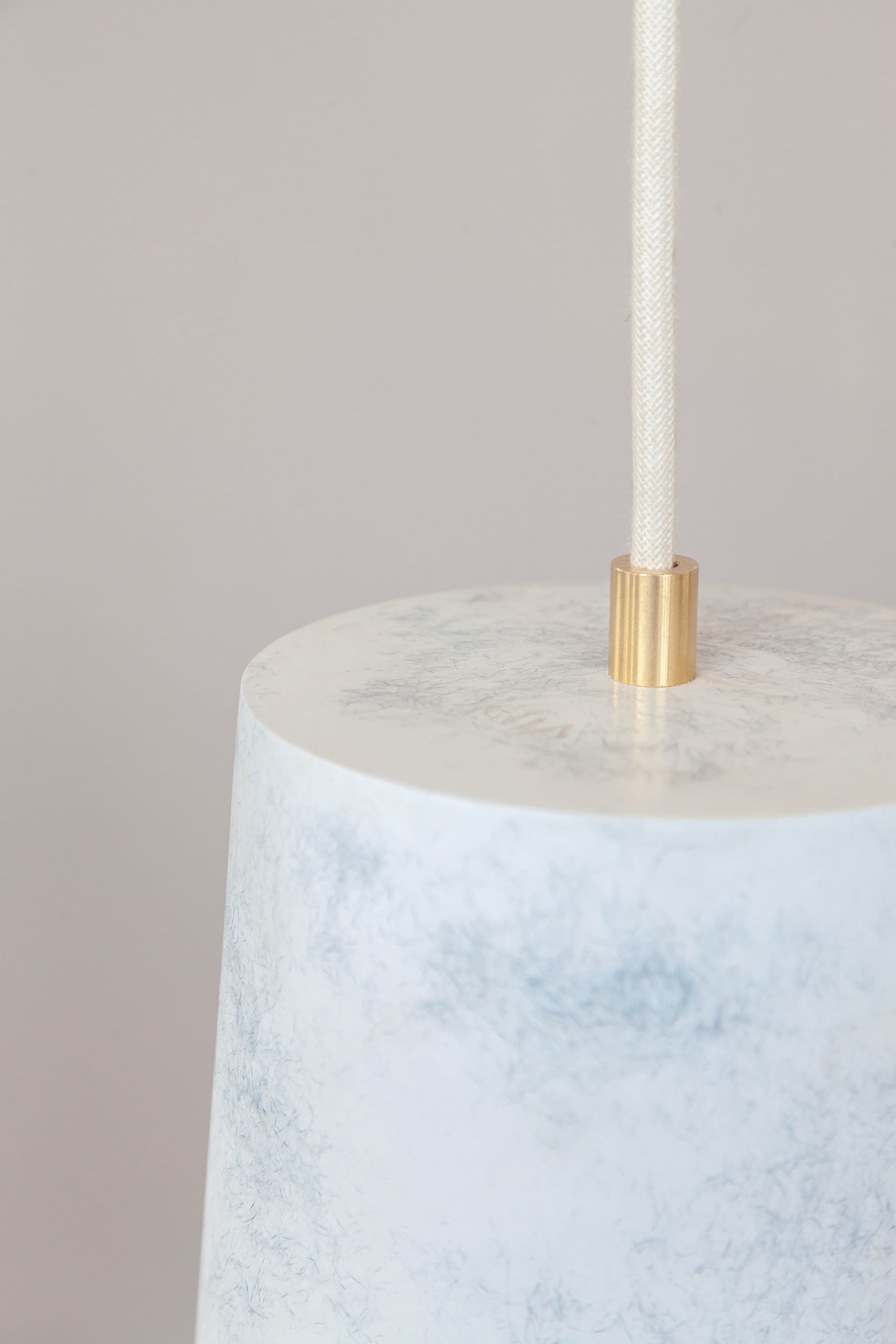
8. Could you describe the technical translation from the flat Jute Tile to the volumetric Jute Light form, and how you ensured its dimensional stability during drying?
The leap from flat tiles to a volumetric lamp wasn’t simple. At first, I shaped the plaster-fibre mix piece by piece. It was painfully slow and prone to cracks. The material dried faster than I could work.
Enter Vij5, the Eindhoven design label. Together, we developed a press mould that not only sped up production but also guaranteed dimensional stability. I deliberately kept the lamp’s design minimalist, so the material itself takes centre stage. The result is a light object that feels sculptural without overshadowing its own material story.
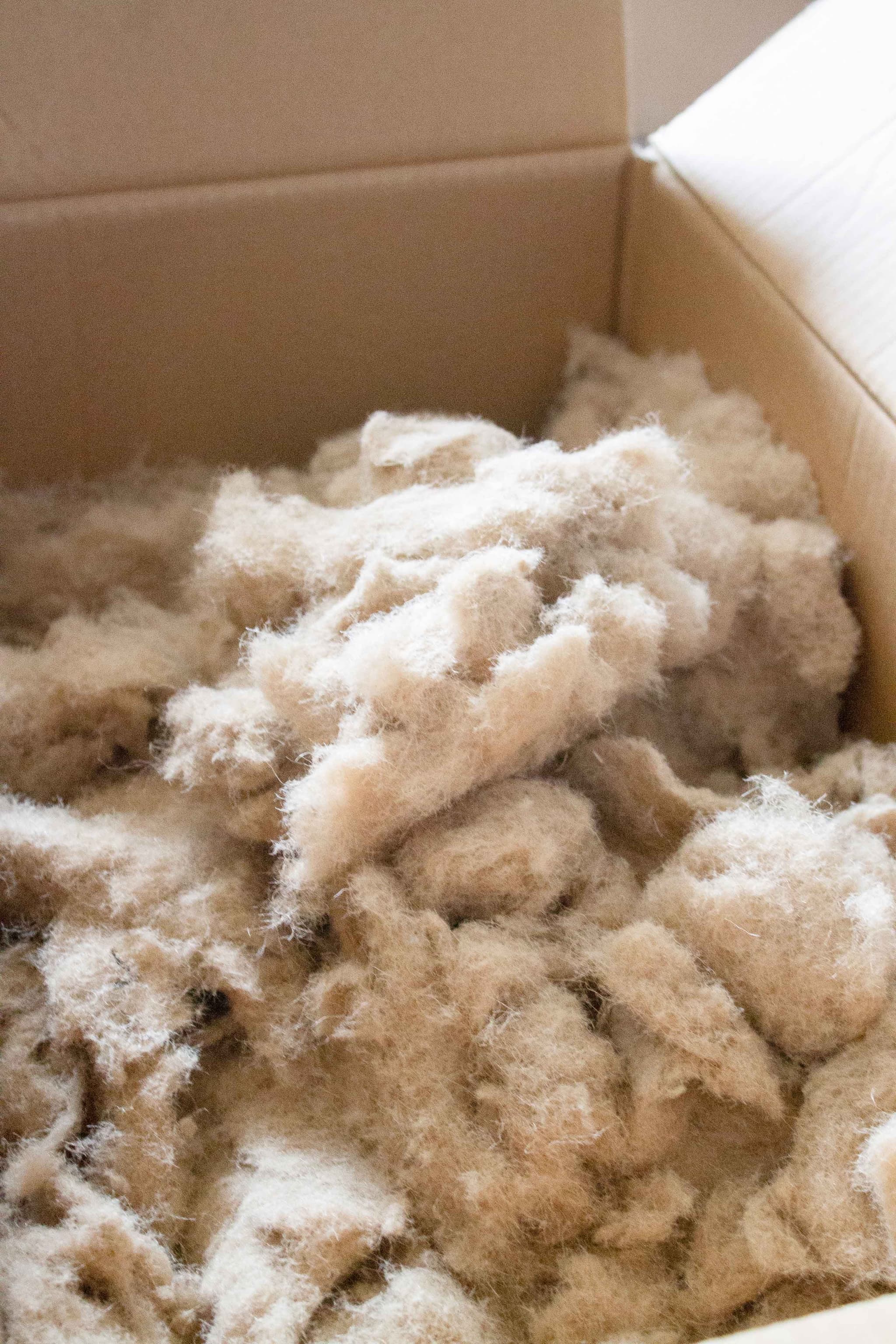
9. Natural dyes like turmeric and indigo feature in Jute Light. What methods did you develop to improve colourfastness and resist fading under prolonged illumination?
Colouring rough plant fibres is far less romantic than it sounds. Turmeric, spirulina, and others produced hues that looked lively in the vat but faded into whispers once blended with plaster’s harsh white.
Only indigo delivered enough punch to survive the process. I leaned on ancient textile dyeing techniques, labor-intensive and delicate. The effect was subtle but poetic. Economically, it wasn’t sustainable to produce an entire series this way, so only one blue Indigo Jute Light exists. The plaster matrix does protect the fibres, though, so fading under light has never been an issue.
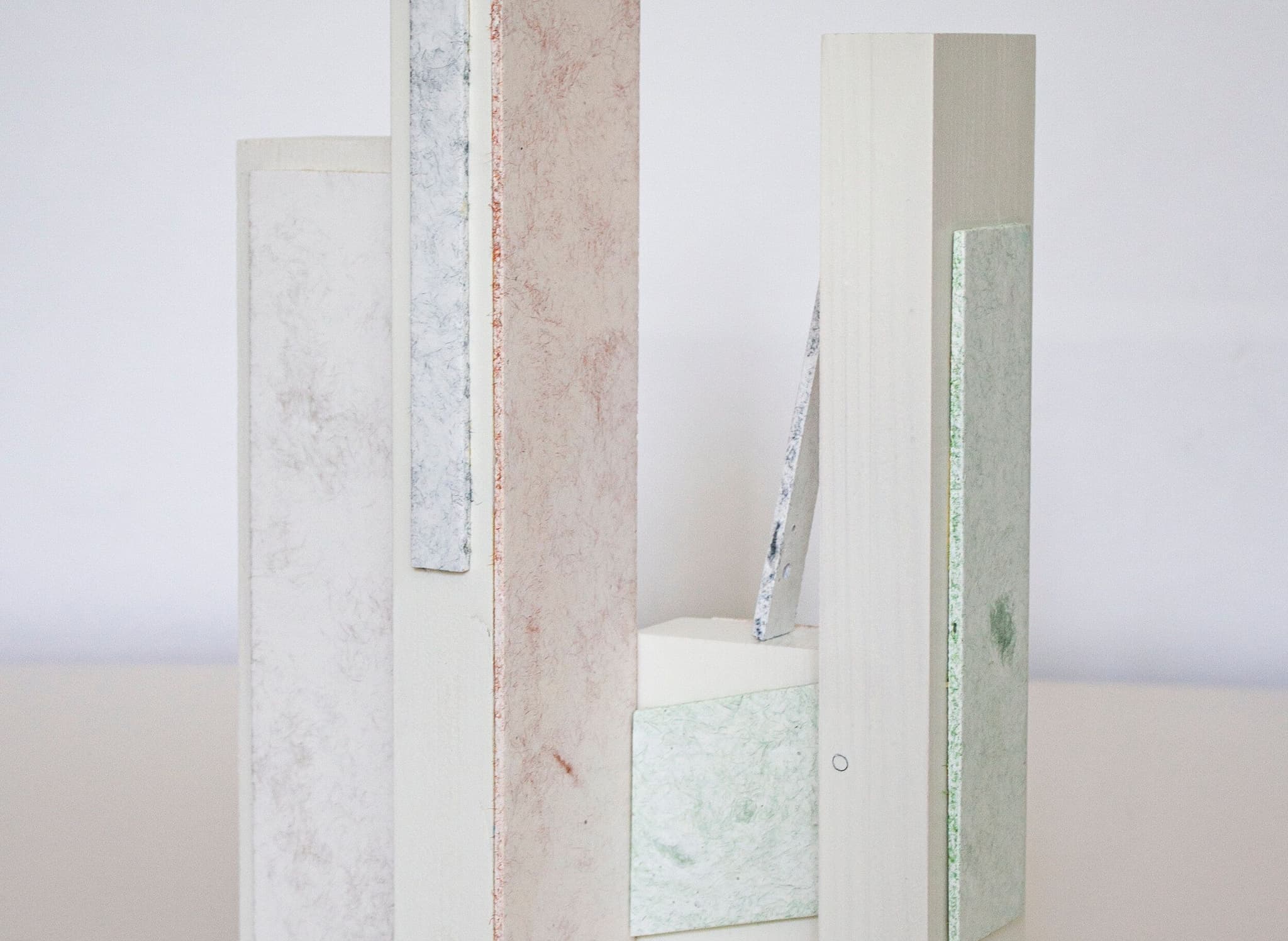
10. Jute Light is fully recyclable back into gypsum dust. What does the recycling process look like in your studio, and how do you manage fibre integrity across reuse cycles?
Gypsum is wonderfully circular. Heat it to 150°C, and it can be rehydrated into new plaster. In my studio, I tested recycling the Jute Tile by crushing failed prototypes, baking out the water, and remixing it.
The result isn’t quite identical to virgin plaster. The fibres shorten after grinding, but it remains perfectly usable. For now, recycling hasn’t reached a full collection due to time (and the gravitational pull of EggshellCeramic©). But the groundwork for closed-loop Jute Light production is already laid.
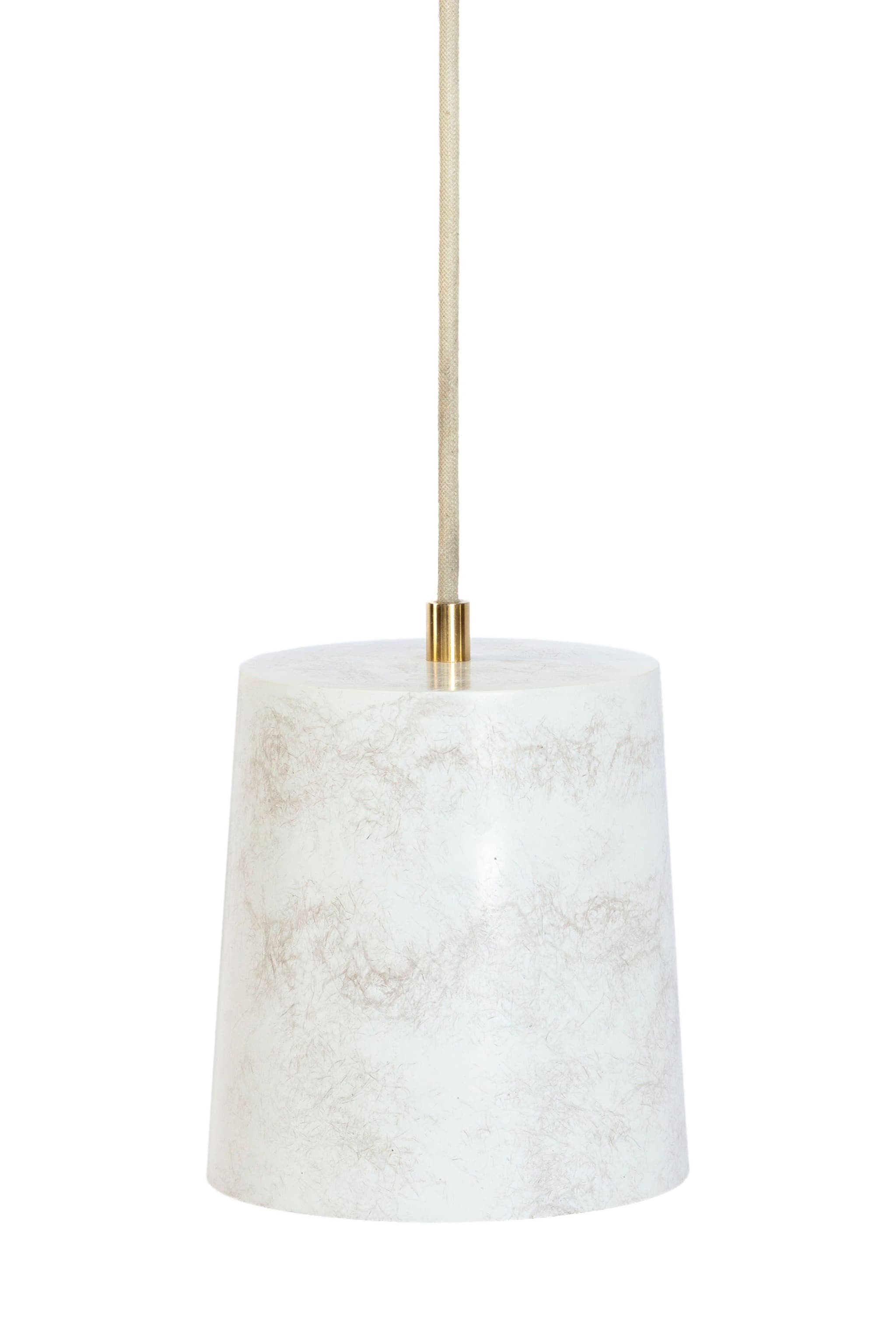
11. Through your partnership with Vij5, Jute Light achieved near zero-waste production. What specific manufacturing adaptations or systems enabled this efficiency?
The collaboration with Vij5 was a game-changer. By creating a wood-and-latex press mould, we not only sped up production but also dramatically reduced failed pieces. The choice of latex instead of plastic kept the process aligned with my low-plastic studio ethos.
Near zero-waste wasn’t a happy accident. It was designed into the system. From leftover fibre to failed prototypes, almost everything had a path back into the cycle.

12. Across both Eggshell Ceramic and Jute Light, how do you see material experimentation guiding the future direction of Atelier LVDW, especially in navigating between waste reuse, aesthetics, and functionality?
At their core, both projects began with a fascination for waste-streams. What others overlook, I see as raw potential. Through countless experiments, I’ve shaped those materials into objects that aren’t just functional or decorative but emotional connectors.
The thread running through my practice is biophilia: a desire to bring people closer to nature through the textures, tactility, and imperfections of bio-materials. I call them “new naturals”, materials that invite us to rethink beauty, value, and waste.
Looking ahead, I want Atelier LVDW to keep expanding this collection of materials for everyday life. Objects that sit quietly in your home yet carry a powerful story of waste transformed into wonder.
